to enlarge


or choose the place
from the menu below
 Rome |
 Byzantium |
 Venice |
 Vienna |
 Brioni |
 Smrikve |
 |
 |
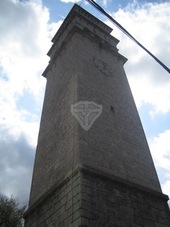 When you pass the town gates on your right
side there is the Bishops palace and few meters above there is a 48 meters high bell tower built in 1860.
Nearby the Bishop palace there is an old well.
When you pass the town gates on your right
side there is the Bishops palace and few meters above there is a 48 meters high bell tower built in 1860.
Nearby the Bishop palace there is an old well.
If you take the first street that goes on the right you will pass near the Parish Church of the Annunciation that even today has the status of the cathedral. The area in front of the cathedral offers a beautiful view over the Istrian countryside.
In the same street you will see a stone inscription of the native house of Matko Brajsa Rasan.
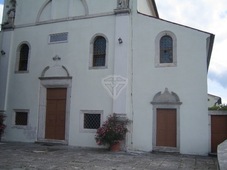 The old Medieval Pican cathedral was reconstructed
during the Baroque period. The main nave was expanded in 1613 but was thoroughly modified in the Baroque spirit between 1753
and 1771.
The old Medieval Pican cathedral was reconstructed
during the Baroque period. The main nave was expanded in 1613 but was thoroughly modified in the Baroque spirit between 1753
and 1771.
The cathedral was completed in 1771 and is also known as St. Nikifor cathedral. It is likely that St. Nikifor died in Pican in 546.
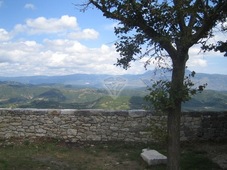 The cathedral hosts several tombstones
of Pican Bishops and other important families like: Bishop Giovanni Barbo (1547), Bishop Marco Rossetti (1765), Vretoner (1755),
Bishop Antonio Zara (1621), Bishop Bonifacio Cecotti (1765), two rich agricultural families, and the last Bishop of Pican
known as Aldargo dei Piccardi (1783).
The cathedral hosts several tombstones
of Pican Bishops and other important families like: Bishop Giovanni Barbo (1547), Bishop Marco Rossetti (1765), Vretoner (1755),
Bishop Antonio Zara (1621), Bishop Bonifacio Cecotti (1765), two rich agricultural families, and the last Bishop of Pican
known as Aldargo dei Piccardi (1783).
In front of the cathedral there is a beautiful view towards southern parts of Istria.
PICAN – HISTORICAL OVERVIEW
Pican was a prehistoric hill fort settlement and later on the Roman settlement named Petina. It is likely that the Histri tribe had a hill fort settlement on the 367 meters high hilltop where today the small Church of St. Michael is located. The settlement was named Oriz.
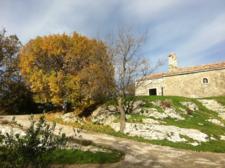 Later
on Pican was part of the German Empire at the beginning of the feudal period and in 1012 was under the Aquileia Patriarchs.
In 1102 the Aquileia Patriarchs received from Count Ulrich II Weimar many Istrian territories and in 1112 it is possible that
the Aquileia Patriarchs gave Pican as feud to Enghelberto I of Eppenstein.
Later
on Pican was part of the German Empire at the beginning of the feudal period and in 1012 was under the Aquileia Patriarchs.
In 1102 the Aquileia Patriarchs received from Count Ulrich II Weimar many Istrian territories and in 1112 it is possible that
the Aquileia Patriarchs gave Pican as feud to Enghelberto I of Eppenstein.
Later on they gave it together with Pazin to Mainardo of Schwarzenburg. Mainardo of Schwarzenburg will found the County of Pazin. In the 13th century Pican was part of County of Pazin. In 1342 Pican was part of Alberto IV properties and it is known that at the time was named Pyben. Later on in 1498 Pican was named Piebnn.
In 1374, when Alberto IV died, Pican became a part of Istrian dominions of the Hasburg family. In 1508, for one year, Venetians occupied Pican because of the war with Austria.
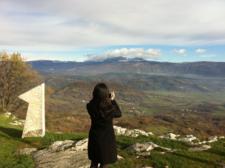 In 1578
Pican had the statute of a town. In 1616, Venetians were again in the war against Austria, Uskoci war, and Pican was defended
at that time by Croatian Captain Ivan Seminic.
In 1578
Pican had the statute of a town. In 1616, Venetians were again in the war against Austria, Uskoci war, and Pican was defended
at that time by Croatian Captain Ivan Seminic.
Pican was for many centuries part of the Austrian dominions in Istria and after a short period of Napoleon rule was again part of Austria and the Austro-Hungarian Monarchy until the end of the First World War. Between the two World Wars, Pican, as the other Istrian towns and villages was part of Italy. After the second World War Pican became part of Yugoslavia (Croatia).
During the Italian Fascist period in Istria many Istrian families suffered from the regime or had to leave Istria.